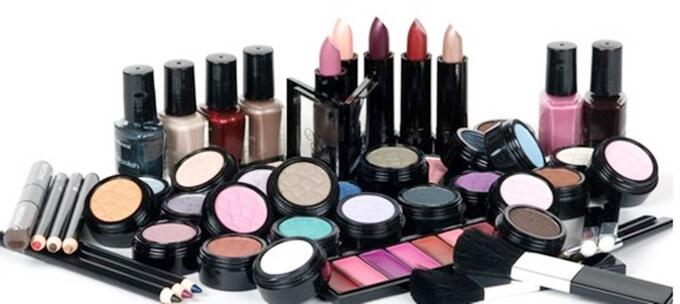Cosmetics include face, body and hair products for example creams, lotions, deodorants, soaps, shampoos, colors, sprays, gels, etc., in addition to color cosmetics such as lipsticks, mascaras, eye shadows, nail polishes, etc., where all of which must be safe for users. Yet, several chemical substances are added to cosmetics either intentionally or accidently, and in many cases some are associated with unfavorable effects. Metals are among the hazardous substances present in cosmetic preparations, and the list of metals found in cosmetics comprise the following: nonessential heavy metals toxic in trace levels such as Arsenic (As), Cadmium (Cd), Lead (Pb), Mercury (Hg), Nickel (Ni) and Antimony (Sb), essential heavy metals dangerous in excessive amounts including Chromium (Cr), Cobalt (Co), Copper (Cu) and Iron (Fe), in addition to the light metal Aluminium (Al). Compared to other routes of exposure (gastrointestinal and respiratory), absorption of heavy metals through the skin is rather minimal, yet these toxic metals can accumulate in the skin and internal organs causing various topical and systemic adverse effects. Also, there are a variety of exposure scenarios to cosmetics where in some cases safety evaluation is a must. Thus, owing to their repetitive usage throughout life, cosmetics contribute to the metal burden in human bodies, and should be considered as potential sources of exposure to heavy metals and Aluminium.
What are the sources of heavy metals in cosmetic preparations?
Metals present in cosmetics can originate from the unintentional use of contaminated herbs and derivatives of crude oil in the synthesis of cosmetic preparations. And on the contrary, they can be added for intentional uses, and the list below provides some examples:
Pigments: Aluminium, Barium Sulphate, Bismuth Sulphate, Calcium Carbonate, Chromium (III) Oxide, Copper, Gold, Silver, Iron Oxides, Lead Acetate…
UV filters: Titanium Dioxide and Zinc Oxide
Preservatives: Silver Chloride, Thiomersal, Phenylmecuric Salts…
Antiperspirants: Aluminium complexes
Skin-lightening agents: Mercury Compounds
Therefore, several countries have generated regulations that either restrict or prohibit the use of specific metals in cosmetics, and set limits to technically unavoidable contamination of cosmetics with metals. While European Union (EU) banned more than 1000 chemicals as ingredients in cosmetics, among them are Sb, As, Cd, Cr (VI), Co, Pb, Hg, Ni and their compounds, the United States Food and Drug Administration (USFDA) banned only 9 chemicals including one toxic metal which is Hg and its compounds. The only exception for Mercury’s presence in cosmetics, according to the EU and USFDA, is its utilization as a preservative in eye cosmetics based on the set levels.
Studies revealing the presence of metals in cosmetics and their raw material
Several studies were performed to assess the levels of various metals in color cosmetics, in addition to face, body and hair care products, where almost all toxic metals were detected and the levels ranged from undetectable to extremely above the acceptable limits. Another surprising finding was the presence of Cr, Co and Ni in toy make-up kits for children, which are directly applied to children’s thin skin and for prolonged periods of time. Adding to this, toxic metals were detected in raw materials used in the synthesis of cosmetics such as nettle, chamomile, horsetail, honey, Argan oil, olive oil, citrus essential oils, Dead Sea mud, cosmetic clays, talcum, Mica, etc, and in traditional natural cosmetics which are mainly “Henna Dyes” and “Kohl”.
A study on the frequently used lipsticks and eye shadows in Iran evaluated the levels of Pb and Cd, where both were detected in various levels and Cd in levels much higher than the acceptable limits set by the FDA. Moreover, traditional cosmetics sold in Tunisian local markets were investigated for possible contamination with heavy metals, and the tested “henna” and “kohl” contain Cd, Pb, Cu and Zinc (Zn) and in some cases in extremely levels. Also, Henna samples marketed in Egypt were tested for 14 toxic metals, and results showed that most samples contain high concentrations of Al, Pb, Cu, Ni and Zn. Cosmetics such as lipsticks, lip glosses, eye shadows and henna dyes samples present in the Serbian were also tested for Cd, Pb and Zn, and only Pb and Zn were detected in high levels in the majority of the tested samples
Several studies reported cases of local allergy as a result of using mainly color cosmetics containing Ni, Co, Cr and Fe, and in the majority of the cases reported patch tests confirmed the mentioned metals to be the most probable allergens. Also, studies showed that Hg toxicities were mainly associated with exploiting skin-lightening creams. Pb and Al toxicities from metal-containing cosmetics were also confirmed by several case reports. There is great evidence that using metal contaminated cosmetics results in symptoms not only in users, but also in non-users family members.
Conclusion
Based on the results obtained from studies performed in many different countries, cosmetics can contain metals, on one hand in concentrations above what is “technically avoidable”, and on the other hand in concentrations extremely below “technically avoidable” limits. The latter draws attention to the feasibility of manufacturing metal-free cosmetics. Also, it is vital to point out that the labels on the majority of cosmetics tested did not indicate the presence of metals as ingredients in the cosmetic product, which is a vital issue when it comes to consumers’ safety.
On this issue Dr. Naji Kodeih the toxicology expert of greenarea.info, stated that the levels of toxins set by companies as “technically unavoidable contamination” cannot be correlated with safety utilization by humans, and recent WHO reports ensure that there are no safe exposure limits for several metals and their compounds, despite the route of exposure. Also, Dr. Kodeih added that exposure to toxins through the dermal route is extremely dangerous to humans, as the toxins can directly reach the systemic circulation and arrive to their target organ/s.











